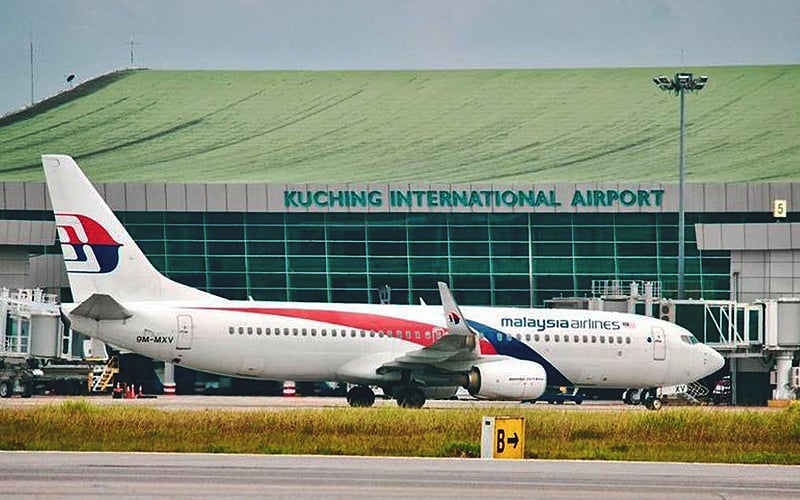
PETALING JAYA: A new airline to serve Sabah and Sarawak is not just viable, but will also carry some advantages, according to aviation analysts.
Imran Yassin, the head of research at MIDF Amanah Investment Bank, said that for a start, such a move could lead to the stabilisation of airfares during the festive seasons.
At the same time, Malaysia Aerospace Industry Association (MAIA) president Naguib Mohd Nor believes it could help to retain local talent in Malaysia.
Recently, Sarawak tourism, creative industry and performing arts minister Abdul Karim Rahman Hamzah said the state would study a proposal that it collaborated with neighbouring Sabah to introduce a new airline to serve the needs of Borneo.
Karim was asked to respond to a suggestion that Sarawak and Sabah form a Borneo airline rather than separate carriers for each of the two states.
In April, Sarawak premier Abang Johari Openg announced that the state’s boutique airline would take off as soon as it has acquired four turboprop aircraft, each with a seating capacity for 120 passengers.
Subsequently, Sabah Air Aviation Sdn Bhd chairman Kenny Chua said it was signing agreements to lease three aircraft before it starts operations in 2024.
This subsequently led to a proposal that both states collaborated rather than set up separate carriers.
Imran said such a partnership could help to stabilise airfares to the two states, especially during the festive periods, making them more affordable.
“The new airline can also extend its reach to under-served destinations, thus creating a wider network and in the process help to increase tourist arrivals,” he told FMT Business.
Moving forward, he said, operating routes specifically to serve the Sabah and Sarawak markets could remain economically viable, especially during the festive periods when high demand tended to lead to increases in airfares.
“This situation presents an opportunity for new entrants, especially if existing airlines encounter challenges in periods of peak demand,” Imran said.
However, he added, the proposed airline must focus on high-demand domestic routes and possibly explore the international market.
In addition, he said, factors such as passenger load and fares should be taken into account to ensure the viability of such an airline.
AirAsia, Malaysia’s low-cost airline, which has a 40% market share, had reported a strong overall load factor of 87% in the second quarter of 2023 (Q2 2023).
“Analysing fare structures can also provide insights into whether airlines are involved in price wars. When intense competition leads to unsustainable low fares, it could be indicative of a saturated market,” Imran said.
“With this information, new entrants can adapt their pricing strategies, consider customer segmentation and potentially explore offering ancillary services as strategies to navigate such market conditions,” he added.
Imran said the capacity limitations at airports could also be a challenge for a new airline entering Sabah and Sarawak. “It limits the airport’s ability to accommodate multiple airlines and flights,” he pointed out.
“The government must develop a comprehensive plan to ensure that an airport can accommodate additional flights before a new airline is introduced,” he added.
Naguib pointed out that many new airlines have taken off globally to take advantage of the recovery in the travel industry post-Covid-19, filling the vacuum left by carriers that had gone under during the pandemic.
“So there are regional and global opportunities for Malaysian companies to explore,” he told FMT Business,
However, he said, the development of new airlines and other air transport operations must come with a stronger talent development programme.
“We need to ensure our key (aviation) hubs such as the Kuala Lumpur International Airport (KLIA) and Sultan Abdul Aziz Shah Airport have grown as projected,” he said.
“We must have stronger talent development programmes to support the development of new airlines and other air transport operations, including urban air mobility, in the near future.
“Post the pandemic many of our talents again are being attracted overseas to work, leaving gaps in local capacity and capability,” he added. - FMT


No comments:
Post a Comment
Note: Only a member of this blog may post a comment.